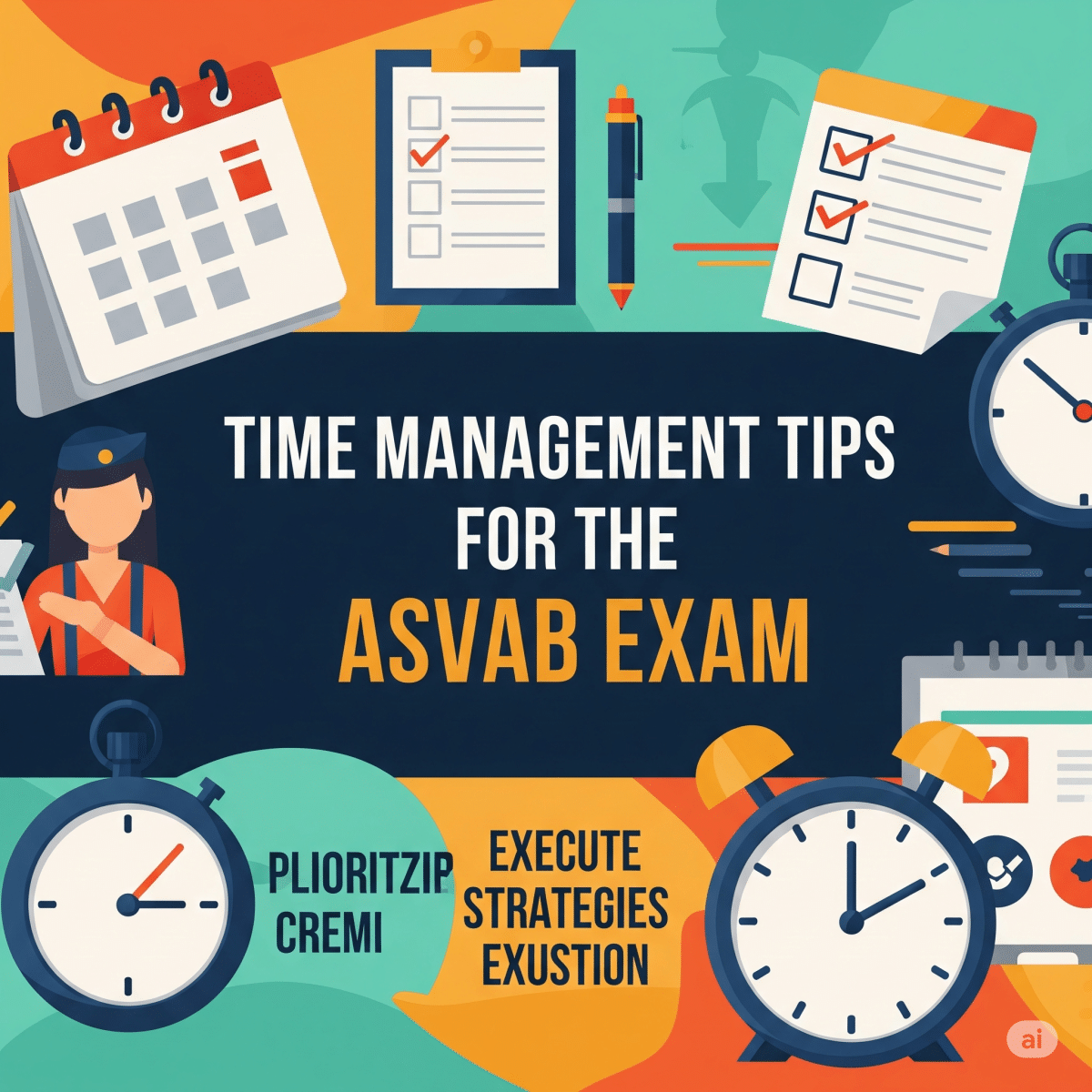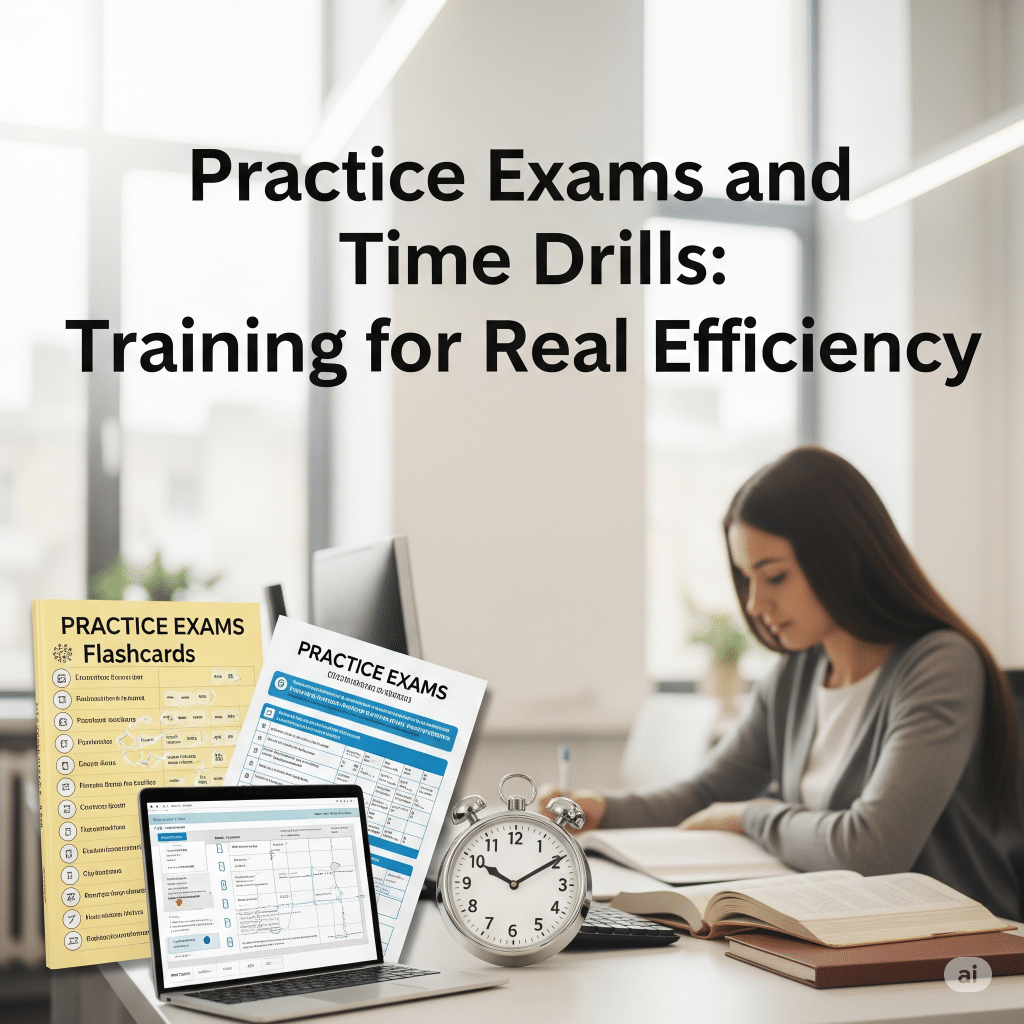Before you can master ASVAB time management, you need to understand what you’re up against. The ASVAB isn’t a single test — it’s a collection of subtests, each with its own time limits and number of questions. Knowing this ahead of time helps you plan how to allocate your time efficiently.
The ASVAB comes in two formats: the CAT-ASVAB (Computerized Adaptive Test) and the P&P-ASVAB (Paper and Pencil). Most people take the CAT-ASVAB at Military Entrance Processing Stations (MEPS). The CAT is shorter, adapts to your skill level, and doesn’t allow you to go back to previous questions. On the other hand, the paper version gives you more flexibility, but takes longer and may be less efficient in terms of pacing.
Here’s a rough breakdown of CAT-ASVAB timing:
- Arithmetic Reasoning: 15 questions – 55 minutes
- Word Knowledge: 15 questions – 9 minutes
- Paragraph Comprehension: 10 questions – 27 minutes
- Mathematics Knowledge: 15 questions – 23 minutes
- Other sections (Mechanical Comprehension, Electronics, etc.) vary in time and number of questions.
Understanding how much time you have for each section lets you calculate how many seconds or minutes per question you can afford to spend. For example, if you have 9 minutes for 15 Word Knowledge questions, you get about 36 seconds per question. That’s not much time, which is why fast thinking and confidence matter.
Time Allocation Tips:
- Know your average pace per question before test day.
- Familiarize yourself with the order of the subtests so you’re not caught off guard.
- Identify your strengths and weaknesses so you know where to spend a little more or less time.
Getting familiar with the exam format is a critical first step. It sets the foundation for all your pacing strategies and prevents you from wasting time trying to figure things out during the actual test.
Developing Smart Test Pacing Strategies
Once you understand the structure of the ASVAB, the next step is building solid pacing strategies. Time goes by quickly on test day, and smart pacing ensures you complete each section without rushing at the end or leaving questions unanswered.
Pacing is about balance. You don’t want to go so fast that you make silly mistakes, but you also don’t want to spend too long on questions and run out of time. You must develop a rhythm that keeps you moving steadily through each section.
Key Pacing Techniques:
- Use Timed Benchmarks: Break down the section into chunks. If you have 20 minutes for 20 questions, try checking your progress every 5 minutes to make sure you’ve completed 5 questions.
- The Three-Round Method (Paper Test):
- Round 1: Answer all the easy, obvious questions first.
- Round 2: Go back to the ones that require more thought.
- Round 3: Use any remaining time to tackle the hardest ones.
- Round 1: Answer all the easy, obvious questions first.
- Time per Question Awareness: Knowing how much time you can spend per question helps prevent overthinking. For example, 30 seconds might be all you need for vocabulary, while math questions could take closer to a minute.
- Don’t Get Stuck: If you spend more than 60 seconds on a question and feel stuck, it’s better to make your best guess and move on. Obsessing over one question wastes time you could use to answer several others.
- Practice Pacing in Advance: When you practice under time constraints, you build a natural sense of pace. You’ll start to know intuitively when you’re going too slow or too fast.
What Happens If You Don’t Pace Well?
You might:
- Leave questions blank due to running out of time.
- Panic and rush through the last few questions.
- Misread instructions or skip key details.
Time is like money — once it’s gone, you can’t get it back. So, learning to pace yourself wisely is one of the best test-day skills you can develop.
Answering Strategies That Save Time
Answering strategies are about being smart — not just knowing the right answer, but knowing how to find it quickly. Many ASVAB test-takers waste time overthinking, re-reading, or second-guessing themselves. These habits can eat up your valuable test minutes. Let’s break down how to answer questions effectively and efficiently.
Key Time-Saving Answering Techniques:
- Read Questions First (for Reading Sections):
Before reading the full paragraph or passage, look at the questions. This way, you’ll know what details to look for when you read, saving you from reading it over and over. - Use Elimination:
Quickly eliminate the options you know are wrong. Narrowing your choices to two increases your odds and helps you focus your thinking. This saves time and increases accuracy. - Skip and Return (Only on Paper Tests):
If you’re stuck on a tough question, skip it and come back later. Don’t let one question stop your momentum. - Use Estimation and Plugging In (for Math):
Instead of solving from scratch, plug the answers into the question to see what works (also called back-solving). Estimation can help if answers are far apart, letting you choose the best option quickly. - Trust Your Gut:
Usually, your first choice is correct. Avoid second-guessing unless you spot a clear error in your reasoning. - Look for Clue Words:
Words like “always,” “never,” and “only” in the question or answers often signal tricky wording. Be alert — these questions can be time traps. - Use Guessing Strategically:
The ASVAB doesn’t penalize wrong answers, so never leave anything blank. Use smart guessing when necessary and move on.
Common Answering Pitfalls to Avoid:
- Spending 2–3 minutes on a single question (especially in math).
- Re-reading passages multiple times
- Getting “tunnel vision” by focusing too long on details that don’t matter.
Being strategic about how you answer questions allows you to get through more of the test — and with more accuracy. It’s all about being efficient with both your brain and your time.
Practice Exams and Time Drills: Training for Real Efficiency
Practicing under timed conditions is the best way to improve your ASVAB time management. Just reading study guides or doing untimed questions won’t help you develop the mental speed and pacing skills you need on test day. You must simulate the test environment to train your brain to work faster and smarter.
Why Timed Practice Is Crucial:
- Builds Stamina: The ASVAB is long. Practicing full-length tests builds the focus and energy you’ll need for test day.
- Improves Awareness: You’ll learn how much time you spend on each question type.
- Reduces Anxiety: Familiarity breeds confidence. If you’ve done it before, it feels less scary.
Effective Time Management Practice Techniques:
- Take Full-Length Timed Tests:
- Replicate real test conditions as closely as possible.
- Use official or reputable ASVAB practice exams.
- Track your time and how long each section takes.
- Replicate real test conditions as closely as possible.
- Do Time Drills by Section:
- Practice 10–15 questions of one section in a tight time frame.
- For example, set 7 minutes for 10 Word Knowledge questions.
- This trains your brain to work quickly without panicking.
- Practice 10–15 questions of one section in a tight time frame.
- Use a Timer Every Time You Practice:
- Whether it’s a stopwatch, phone timer, or online app, time yourself.
- Practice finishing with a few minutes to spare.
- Whether it’s a stopwatch, phone timer, or online app, time yourself.
- Analyze Mistakes + Time Taken:
- Did you get a question wrong because you misunderstood, rushed, or ran out of time?
- Are there sections where you consistently run over?
- Did you get a question wrong because you misunderstood, rushed, or ran out of time?
- Track Progress Over Time:
- Write down your scores, time used, and number of unanswered questions after each test.
- Write down your scores, time used, and number of unanswered questions after each test.
Pro Tip: Use Spaced Repetition + Timed Review
Combine time drills with spaced repetition (repeating material over increasing intervals) to improve both retention and speed.
The more you simulate test conditions, the less likely you are to freeze up or waste time on the real exam. Practicing smart is just as important as studying hard.
Final Exam-Day Time Management Tips
You’ve studied, you’ve practiced — now it’s game day. Even with all your prep, managing your time during the ASVAB is key to success. Let’s go through practical tips to help you stay efficient and focused on test day.
Before You Arrive:
- Get a Full Night’s Sleep: Your brain needs rest to process information quickly.
- Eat a Light Breakfast: Choose protein and complex carbs — avoid heavy, greasy food.
- Arrive Early: Give yourself at least 30 minutes buffer to settle in and reduce stress.
- Bring the Essentials: ID, confirmation paperwork, and anything else the test center requires.
During the Exam:
- Start Strong:
Use your energy and focus to get through the first few sections quickly and confidently. - Use Time Benchmarks:
Check the clock (or on-screen timer) at regular intervals. Don’t obsess, but be aware. - Don’t Dwell on Difficult Questions:
If you’re stuck, guess and move on. There’s no penalty for wrong answers. - Manage Mental Fatigue:
Take short mental breaks between sections — close your eyes, breathe, reset. - Stay Calm and Focused:
Use grounding techniques if you feel overwhelmed. Deep breathing, positive self-talk, or visualizing success can help. - Keep Track of Time Left Per Section:
Don’t let time surprise you. You should always know how many minutes you have left. - Double-Check If You Have Time (Paper Test):
If you finish early, use leftover time to revisit skipped questions or check your work.
What to Avoid:
- Checking the time every minute (it creates stress).
- Comparing your pace with others in the room.
- Getting discouraged if one section feels harder.
Test day is your moment to apply everything you’ve learned. With good time habits and mental readiness, you can stay focused, avoid panic, and perform at your best.


